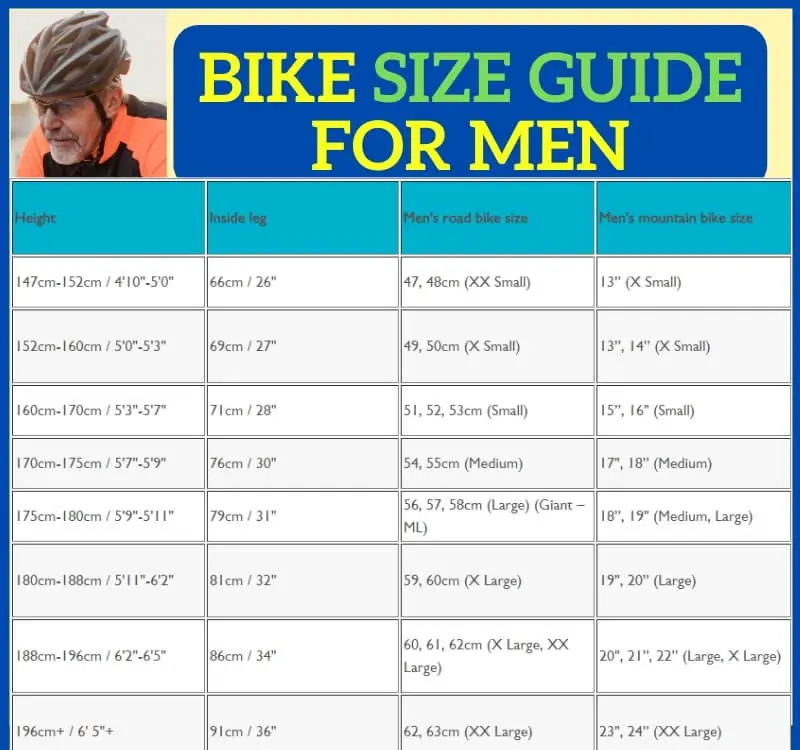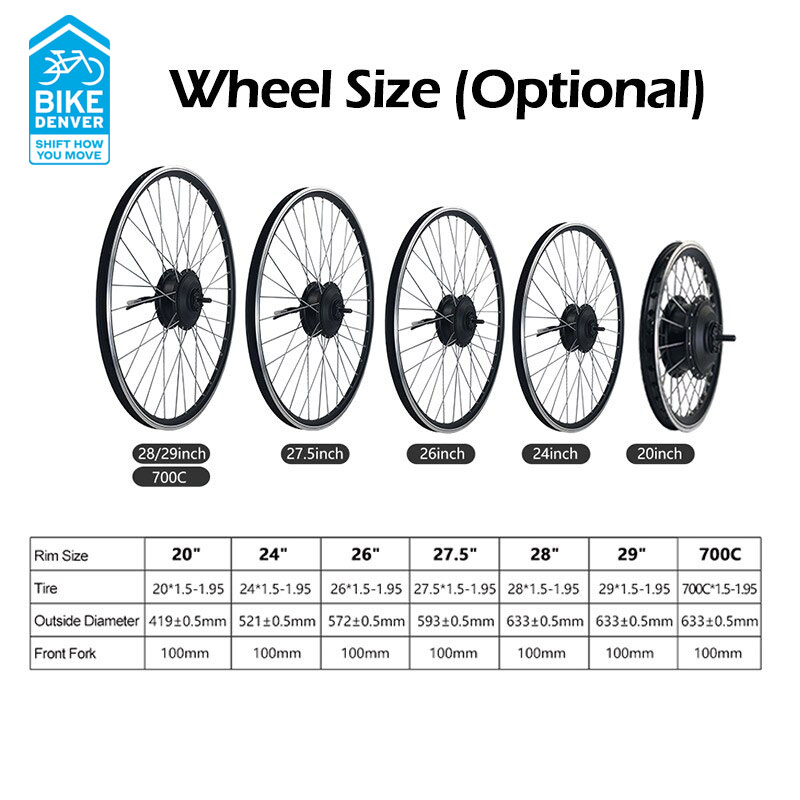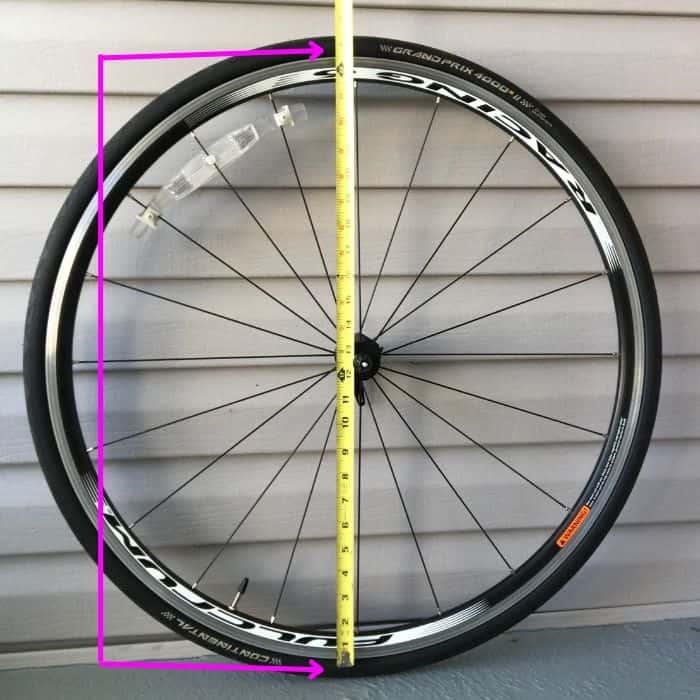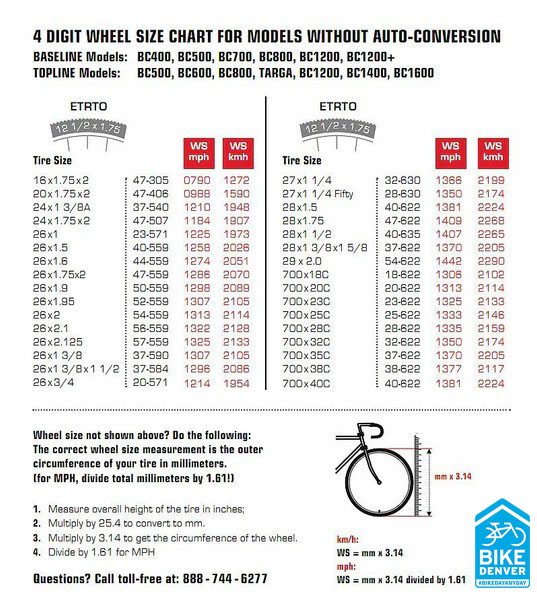An Overview of Bicycle Wheel Sizes: What You Need to Know
Bicycle wheel sizes play a crucial role in determining the overall performance, handling, and feel of a bicycle. The wheel size significantly influences various aspects, such as acceleration, top speed, stability, and comfort. By understanding the common bicycle wheel sizes, cyclists can make informed decisions when selecting a new bike or upgrading components. The most prevalent wheel sizes include 26″, 27.5″, 29″, and 700c. These sizes cater to different cycling disciplines, including mountain biking, road cycling, and touring. Each size offers unique advantages and disadvantages, making it essential to consider factors such as rider height, riding style, and terrain preferences when choosing the right wheel size.
The Most Common Bicycle Wheel Sizes: A Detailed Analysis
Among the various wheel sizes available, a few have emerged as the most prevalent and widely used in the cycling community. These common bicycle wheel sizes cater to different disciplines and offer unique advantages and disadvantages.
26″ Wheels
For many years, 26″ wheels were the standard for mountain bikes due to their strength, durability, and maneuverability. However, they have become less common as other sizes have gained popularity. They are still used on some junior mountain bikes and BMX bikes, making them suitable for smaller riders or specific disciplines.
27.5″ Wheels (also known as 650b)
Often considered the middle ground between 26″ and 29″ wheels, 27.5″ wheels offer a balance of acceleration, rollover ability, and maneuverability. They are popular in mountain biking, particularly in trail and enduro disciplines, where riders benefit from their versatile performance characteristics.
29″ Wheels
Larger wheels roll more efficiently over obstacles, providing increased traction, stability, and momentum. As a result, 29″ wheels have become increasingly popular in cross-country and marathon mountain biking, where speed and efficiency are crucial. However, they may be less maneuverable in tight, technical trails compared to smaller wheel sizes.
700c Wheels
Commonly used in road cycling and touring, 700c wheels offer a smooth and efficient ride. Their larger diameter contributes to higher speeds and better rollover capabilities on various surfaces. Moreover, they can accommodate wider tires, providing increased comfort and versatility for different terrains and conditions.
How to Choose the Right Wheel Size for Your Bicycle: A Step-by-Step Guide
Selecting the appropriate wheel size is crucial for optimizing your cycling experience. By considering factors such as rider height, riding style, and terrain preferences, you can make an informed decision and enjoy the benefits of a well-matched wheel size. Follow this step-by-step guide to choose the right wheel size for your bicycle:
1. Identify Your Cycling Discipline
Different cycling disciplines typically use specific wheel sizes. For example, 26″, 27.5″, and 29″ wheels are common in mountain biking, while 700c wheels are prevalent in road cycling and touring. Determine your primary cycling activity to narrow down your wheel size options.
2. Assess Your Rider Height
Taller riders often benefit from larger wheel sizes, as they provide increased stability and rollover capabilities. Conversely, smaller riders may find smaller wheel sizes more manageable and better suited to their needs. Consider your height when selecting a wheel size, but keep in mind that individual preferences and riding styles can also influence your decision.
3. Evaluate Your Riding Style
Aggressive riders who prioritize maneuverability and acceleration may prefer smaller wheel sizes, while those who prioritize speed and efficiency may opt for larger wheel sizes. Consider your riding style and preferences when choosing a wheel size.
4. Consider the Terrain
Different wheel sizes perform better on specific terrains. For instance, larger wheels roll more efficiently over obstacles, making them suitable for smooth roads or open trails. Smaller wheels, on the other hand, offer better maneuverability in tight, technical trails. Analyze the terrain you will primarily be riding on when selecting a wheel size.
5. Test Ride Options
If possible, test ride bicycles with different wheel sizes to determine which feels most comfortable and suitable for your needs. Pay attention to factors such as acceleration, top speed, stability, and comfort, as these can vary between wheel sizes.
Influence of Bicycle Wheel Sizes on Performance: A Comparative Study
Wheel size significantly impacts various performance metrics, including acceleration, top speed, stability, and comfort. By understanding these differences, cyclists can make informed decisions when selecting a wheel size for their specific needs. This comparative study analyzes the influence of common bicycle wheel sizes on performance.
Acceleration
Smaller wheel sizes, such as 26″ and 27.5″, generally accelerate faster due to their lower rotational mass and quicker engagement. Larger wheel sizes, like 29″ and 700c, may require more effort to accelerate but maintain momentum better once rolling.
Top Speed
Larger wheel sizes typically achieve higher top speeds due to their increased circumference, which allows them to cover more distance with each rotation. However, smaller wheel sizes can still reach high speeds, especially in tight, technical terrains where maneuverability is crucial.
Stability
Larger wheel sizes generally offer increased stability, as their larger contact patch and higher inertia make them more resistant to external forces. This stability contributes to a smoother, more comfortable ride on various surfaces. Conversely, smaller wheel sizes may provide better maneuverability in tight spaces or technical terrains.
Comfort
Comfort is subjective and depends on individual preferences and riding styles. However, larger wheel sizes often provide a more comfortable ride due to their increased shock absorption and smoother rollover capabilities. Smaller wheel sizes can offer a more responsive and agile ride, which some cyclists may prefer.
Making an Informed Decision
By comparing these performance metrics, cyclists can determine which wheel size best suits their needs and preferences. Consider factors such as terrain, riding style, and personal comfort when selecting a wheel size for optimal performance and enjoyment.
Real-Life Applications: Bicycle Models with Popular Wheel Sizes
Understanding the impact of common bicycle wheel sizes on performance is essential, but it’s also helpful to see these wheel sizes in action on popular bicycle models. Here, we highlight a few models that showcase the most prevalent wheel sizes.
26″ Wheels: GT Aggressor Expert
The GT Aggressor Expert is a versatile and affordable hardtail mountain bike designed for trail riding and commuting. Featuring 26″ wheels, this model is lightweight, maneuverable, and well-suited for smaller riders or tight, technical trails.
27.5″ Wheels: Trek Fuel EX 8
The Trek Fuel EX 8 is a trail bike that combines efficiency, versatility, and capability. Its 27.5″ wheels offer a balance of acceleration, rollover ability, and maneuverability, making it an excellent option for various trail conditions and riding styles.
29″ Wheels: Santa Cruz Tallboy
The Santa Cruz Tallboy is a 29″ wheeled trail bike that excels in speed, efficiency, and stability. Its larger wheels roll smoothly over obstacles, providing increased traction, momentum, and comfort on cross-country and marathon rides.
700c Wheels: Specialized Roubaix Comp
The Specialized Roubaix Comp is a road bike designed for endurance and comfort. Its 700c wheels offer a smooth and efficient ride, perfect for long-distance rides, training, or commuting on paved roads.
Upgrading or Customizing Your Bicycle Wheels: Factors to Consider
Customizing or upgrading your bicycle wheels can significantly enhance your cycling experience. However, several factors must be considered before making such changes. Here, we discuss compatibility, cost, and performance benefits associated with upgrading or customizing your bicycle wheels.
Compatibility
Before upgrading or customizing your wheels, ensure that they are compatible with your bicycle frame, fork, and brakes. For instance, disc brakes require specific hub widths and rotor mounting standards, while rim brakes have specific rim width and brake track requirements. Additionally, consider the number of spokes, wheel diameter, and axle compatibility to ensure a smooth transition.
Cost
High-quality wheelsets can be expensive, so it’s essential to establish a budget before making a purchase. Consider the potential performance benefits and weigh them against the cost. Remember that a more expensive wheelset doesn’t always mean better performance or longevity. Research various brands, models, and materials to find the best value for your money.
Performance Benefits
Upgrading or customizing your wheels can offer several performance benefits, such as improved aerodynamics, reduced weight, and enhanced durability. Aerodynamic wheels, for example, can significantly reduce air resistance, leading to increased speed and efficiency. Lighter wheels can improve acceleration and handling, while stronger wheels can withstand rough terrains and heavy loads.
Making an Informed Decision
When upgrading or customizing your bicycle wheels, consider your riding style, preferences, and budget. Research various wheel options, consult with experts, and test ride different wheelsets if possible. By carefully evaluating these factors, you can make an informed decision and enjoy the benefits of a customized wheelset tailored to your needs.
Trends and Innovations in Bicycle Wheel Technology: The Future of Cycling
The world of cycling is constantly evolving, and recent advancements in wheel technology are no exception. These innovations have the potential to significantly impact common bicycle wheel sizes and the overall cycling experience. Here, we explore some of the most exciting trends and innovations in bicycle wheel technology.
Wider Rims and Tires
Wider rims and tires are becoming increasingly popular, offering improved traction, stability, and comfort. Wider rims provide better support for larger tires, allowing for lower tire pressures and increased grip on various surfaces. This trend is particularly relevant for mountain biking, where wider rims and tires can enhance control and maneuverability.
Tubeless Technology
Tubeless technology has gained traction in recent years, as it eliminates the need for inner tubes, reducing rotational weight and minimizing the risk of punctures. Tubeless tires also allow for lower tire pressures, which can improve traction, comfort, and rolling resistance. This technology is now common in various cycling disciplines, including mountain biking, road cycling, and cyclocross.
Advanced Materials
Carbon fiber and high-grade alloys continue to dominate the wheel market, as manufacturers seek to create stronger, lighter, and more durable wheelsets. These advanced materials offer improved aerodynamics, stiffness, and responsiveness, making them ideal for high-performance applications. Additionally, composite materials like carbon fiber can be molded into complex shapes, enabling better integration with brakes and other components.
Smart Wheels
The integration of technology in cycling has led to the development of smart wheels, which can communicate with other components and devices to provide real-time data and analytics. These wheels can monitor factors such as speed, distance, and power output, helping cyclists optimize their performance and make data-driven decisions.
The Future of Common Bicycle Wheel Sizes
As wheel technology advances, common bicycle wheel sizes may continue to evolve. For example, the growing popularity of gravel riding has led to the development of intermediate wheel sizes, such as 650b, which offer a balance between agility and stability. Additionally, the increasing prevalence of electric bicycles may result in the need for stronger and more robust wheelsets to accommodate higher torque and speed.
Embracing Innovation
By staying informed about the latest trends and innovations in bicycle wheel technology, cyclists can make more informed decisions when selecting, upgrading, or customizing their wheelsets. Embracing these advancements can lead to improved performance, enhanced comfort, and a more enjoyable cycling experience.
Maintaining and Caring for Your Bicycle Wheels: Tips and Best Practices
Proper maintenance and care are crucial for ensuring the longevity and optimal performance of your bicycle wheels. By following these tips and best practices, you can keep your wheels in excellent condition and enjoy a safer, more enjoyable cycling experience.
Regular Inspections
Inspect your wheels before every ride, paying particular attention to the tire pressure, spoke tension, and wheel trueness. Address any issues promptly to prevent further damage or potential accidents.
Cleaning and Lubrication
Clean your wheels regularly using a mild detergent and warm water. Dry them thoroughly to prevent rust. Additionally, lubricate the wheel bearings and freewheel/cassette mechanisms periodically to ensure smooth operation.
Tire Pressure Management
Maintain the recommended tire pressure for your wheel size and tire type. Under-inflated tires can lead to increased rolling resistance, while over-inflated tires may compromise traction and comfort. Check the tire pressure before every ride and adjust as necessary.
Spoke Tension and Wheel Trueness
Ensure that the spoke tension is evenly distributed and that the wheels are true. Loose or uneven spokes can lead to wheel wobbling, reduced performance, and potential safety issues. Consult a professional if you are unsure about adjusting spoke tension or truing wheels.
Proper Storage
Store your bicycle in a dry, clean, and temperature-controlled environment to minimize wheel degradation. Hang the bicycle or use wheel supports to prevent unnecessary weight on the wheels.
Seeking Professional Assistance
When in doubt, consult a professional bicycle mechanic for assistance with wheel maintenance and care. Regular professional servicing can help identify potential issues before they become significant problems and ensure that your wheels remain in top condition.
The Importance of Proper Wheel Care
By following these tips and best practices, you can help ensure that your bicycle wheels remain in excellent condition. Proper wheel care not only extends the lifespan of your wheels but also contributes to a safer, more enjoyable cycling experience. Remember that common bicycle wheel sizes require specific maintenance considerations, so always consult your bicycle’s user manual or a professional mechanic for guidance.








